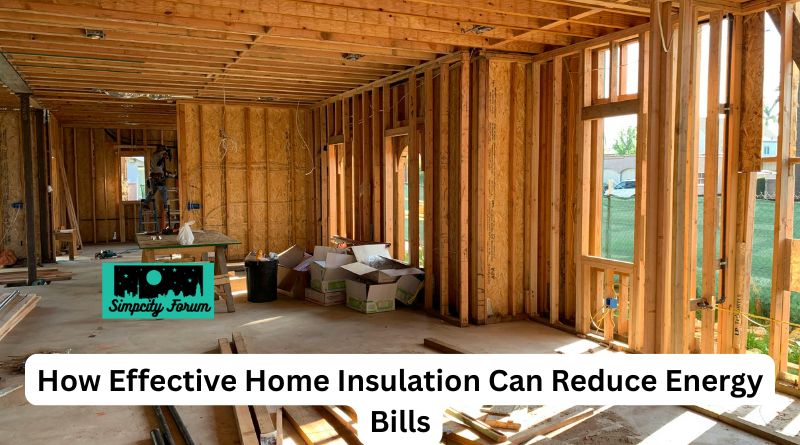Introduction to Home Insulation
Home insulation is a crucial strategy for homeowners to reduce monthly expenses, especially as energy costs continue to rise. It forms a thermal barrier around the home, protecting it from uncomfortable temperature swings and regulating energy consumption. By improving the home’s envelope, homeowners can maintain a consistent indoor environment, resulting in substantial reductions in heating and cooling costs. NetZero insulation suggests that installing modern, high-performance insulation is one of the most effective steps towards sustainable energy savings. Upgrading insulation not only reduces the ecological footprint but also reduces the frequency and intensity of the HVAC system, reducing wear and tear on expensive equipment. By identifying areas of energy loss and implementing targeted improvements, homeowners can achieve long-term reductions in their utility bills.
Understanding the Role of Insulation
Insulation’s primary function is to reduce the transfer of heat in and out of your home, acting as both a shield against the cold during winter and a guard against oppressive heat during summer. The efficiency of insulation is measured using R-values, which are a material’s resistance to heat flow. The higher the R-value, the material’s insulating power—essentially, it becomes more capable of minimizing temperature fluctuations within the home. This quality is the cornerstone of both energy savings and indoor comfort, as it means less energy is required from your heating and cooling systems. With the right R-values selected for each area of your home, your energy demands decrease, resulting in consistent, lower utility bills and reduced strain on your HVAC units.
Areas to Focus On
Achieving the greatest energy savings and comfort upgrades depends on focusing insulation efforts where they count the most. Certain areas of the home are more prone to energy loss and thus should be prioritized:
- Attic: Often the largest source of heat loss in most homes, the attic acts as a gateway for warm air to rise and escape during winter, while allowing external heat to enter during summer. Properly insulating the attic can halt these losses, keeping your living spaces consistently comfortable and your energy bills manageable.
- Walls: Both exterior and select interior walls play a critical role in maintaining a stable temperature inside your home. Effective wall insulation prevents the slow but steady exchange of heat, allowing for year-round regulation regardless of the season.
- Floors: Uninsulated floors—especially those above garages, basements, or crawl spaces—can result in unwelcome drafts and chilly rooms. By insulating these areas, you eliminate cold spots and enhance your home’s overall thermal efficiency.
- Home’s Crawl Spaces: These parts of the house are frequently overlooked but can be major sources of energy loss and moisture intrusion. Insulating basements and crawl spaces not only guards against temperature loss but also helps manage humidity, resulting in higher indoor air quality and enhanced structural durability.
Choosing the Right Insulation Material
The effectiveness of your home’s insulation is closely tied to the materials you select for each application. Matching the home’s type to your needs and suction style can maximize performance, durability, and savings:
- Fiberglass: As one of the most popular and budget-friendly options, fiberglass insulation is prized for its versatility and fire-resistant properties. It can be easily fitted into attics, walls, and floors and is often found in rolls or batts. Its consistent performance and relative ease of installation make it a staple in both new builds and retrofits.
- Cellulose: Created from recycled paper and treated for fire safety, cellulose insulation is an environmentally conscious choice. It’s particularly effective in filling wall cavities and irregular spaces, which helps reduce gaps and air leaks—key contributors to energy loss.
- Spray Foam: This advanced material expands on application, efficiently sealing tiny gaps and cracks that other forms of insulation might miss. Spray foam is ideal for irregularly shaped spaces, rim joists, and hard-to-reach areas that are difficult to access with traditional materials, and it offers one of the highest R-values per inch.
- Rigid Foam Boards: Rigid foam is used where maximum insulating value is required in tight spaces, such as exterior sheathing, foundations, or basement walls. Its dense structure also makes it a perfect solution for tackling thermal bridges, where heat can bypass insulation via conductive materials in the home’s structure.
Benefits and Incentives
Insulating your home delivers benefits well beyond improved comfort. According to the U.S. Department of Energy, comprehensive insulation and air sealing efforts can reduce heating and cooling costs by up to 15%. These annual savings accumulate quickly, often offsetting the upfront investment within a few years and continuing to provide value throughout the insulation’s lifespan. Ainsulation’s insulation upgrades enhance property resale value and demonstrate a commitment to sustainability, a growing priority among homebuyers.
To help mitigate the initial expense, numerous federal tax credits and local incentives are available to homeowners who invest in energy-efficient improvements. These programs, which can be explored further through federal resources and state utility providers, offset installation costs and make insulation upgrades affordable for a wide range of households.

